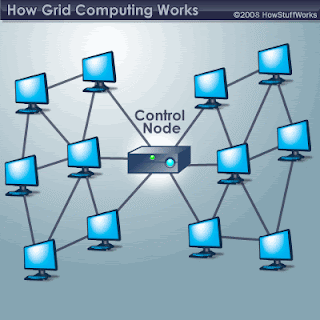A large network of computers is being set up in seven European countries to crunch data from patients suffering from neurological disorders such as Alzheimer's disease. By analyzing data from around 6500 MRI scans, scientists hope to find new treatments and faster ways of diagnosis for those suffering from neurodegenerative diseases. The project is funded with 2,8 million euros from the EU.
Data
When clinicians suspect someone to have a neurological impairment, they mostly perform an MRI scan: it is capable of showing brain structures, revealing whether everything is still intact and functioning. Neurodegenerative disorders slowly 'eat away' functional brain tissue, as is the case in 'famous' diseases such as Alzheimer's or Parkinson's. An MRI scan reveals the degree of damage and is frequently used for diagnosis. The data of many patients combined is put into a dataset which is to be analyzed by a large grid of computers, called Neugrid. Initial testing will be performed with five nodes that contain 100 cores each. Thereafter, the network will be expanded to contain over 2500 cores spread over a larger number of nodes, each calculating bits of the data.
Use
By combining data from a large set of patients, scientists hope to uncover more about the pathology of neurological diseases, which should help us finding cures or improving diagnosis. By tracking the progress of deterioration over time, we learn more about where a certain disease starts its path to destruction in the brain and how it behaves over time. Having a large dataset comprising of over 6500 scans ought to give unprecedented detail into disease progress, especially because the scientists have gathered patient data from different time points after onset of the disease.
Prospects
Having a large dataset, the required software and computing power for analysis helps clinicians diagnose their patients, because it allows them to compare MRI data. By comparing the brains of their patients and MRI data from the aforementioned dataset, diagnosis ought to be more precise and trustworthy. And who knows, perhaps detailed analysis of a large set of patient data gives us new insights that lead to development of new drugs. For Alzheimer's, scientists are currently trying various new treatments, such as electrical brain stimulation. We are also still uncovering information about its onset, as recent studies have shown that Alzheimer's may be acquired through infection, and that the liver may play a role in causing the disease. For Parkinson's, scientists have tried using stem cells or genetic modification.
Data
When clinicians suspect someone to have a neurological impairment, they mostly perform an MRI scan: it is capable of showing brain structures, revealing whether everything is still intact and functioning. Neurodegenerative disorders slowly 'eat away' functional brain tissue, as is the case in 'famous' diseases such as Alzheimer's or Parkinson's. An MRI scan reveals the degree of damage and is frequently used for diagnosis. The data of many patients combined is put into a dataset which is to be analyzed by a large grid of computers, called Neugrid. Initial testing will be performed with five nodes that contain 100 cores each. Thereafter, the network will be expanded to contain over 2500 cores spread over a larger number of nodes, each calculating bits of the data.
 |
| The general idea of a computer grid. Courtesy of HowStuffWorks. |
By combining data from a large set of patients, scientists hope to uncover more about the pathology of neurological diseases, which should help us finding cures or improving diagnosis. By tracking the progress of deterioration over time, we learn more about where a certain disease starts its path to destruction in the brain and how it behaves over time. Having a large dataset comprising of over 6500 scans ought to give unprecedented detail into disease progress, especially because the scientists have gathered patient data from different time points after onset of the disease.
Prospects
Having a large dataset, the required software and computing power for analysis helps clinicians diagnose their patients, because it allows them to compare MRI data. By comparing the brains of their patients and MRI data from the aforementioned dataset, diagnosis ought to be more precise and trustworthy. And who knows, perhaps detailed analysis of a large set of patient data gives us new insights that lead to development of new drugs. For Alzheimer's, scientists are currently trying various new treatments, such as electrical brain stimulation. We are also still uncovering information about its onset, as recent studies have shown that Alzheimer's may be acquired through infection, and that the liver may play a role in causing the disease. For Parkinson's, scientists have tried using stem cells or genetic modification.

No comments:
Post a Comment